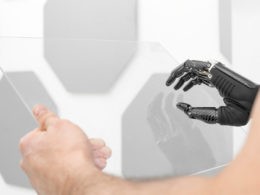Product design is a cornerstone of success in today’s fiercely competitive market, influencing consumer appeal and functional efficiency.
Virtual prototyping is at the forefront of this evolution, a transformative approach that revolutionizes product conceptualization and refinement.
Virtual prototyping harnesses the power of realistic rendering software, such as Eclat Digital’s Ocean, to simulate intricate details and behaviors of products in a virtual environment.
This technology enables designers to visualize, iterate, and perfect product designs with unparalleled accuracy before physical production begins.
By leveraging advanced geometric optics principles, Ocean predicts how light interacts with materials, offering designers insights into aesthetics and performance.
This capability accelerates design cycles and minimizes costs associated with traditional prototyping methods.
As industries embrace virtual prototyping, realistic rendering software like Ocean becomes indispensable in shaping the future of innovative product development.
What is Realistic Rendering Software?
Realistic rendering software is advanced computer programs that simulate objects’ physical appearance and behavior in a virtual environment.
It accurately replicates how light interacts with materials, creating lifelike visualizations of products before they are physically produced.
This technology is pivotal in product design and development as it allows designers to evaluate aesthetics, functionality, and performance early in the design process.
Realistic rendering software offers significant advantages compared to traditional prototyping methods such as clay modeling or physical mock-ups.
It accelerates design cycles by enabling rapid iterations and modifications without costly physical prototypes.
Additionally, it provides a more accurate representation of the final product’s appearance and behavior, facilitating better decision-making throughout the design phase.
Advantages of Virtual Prototyping
Virtual prototyping offers several key advantages over traditional methods. Firstly, it reduces costs associated with physical prototyping and testing by enabling digital simulations.
This cost-effectiveness is complemented by time-saving benefits, allowing companies to bring products to market faster.
Moreover, virtual prototypes enable designers to visualize and iterate designs quickly, experimenting with different configurations and materials to optimize performance and user experience.
Furthermore, virtual prototyping enhances collaboration among design teams and stakeholders. It facilitates real-time feedback and remote collaboration, breaking geographical barriers and ensuring everyone is aligned throughout development.
This collaborative environment fosters innovation and reduces the risk of errors or misunderstandings, ultimately leading to more successful product launches.
Introducing Eclat Digital and Ocean Software
Eclat Digital stands out as a leader in virtual prototyping, specializing in optical simulations that enhance product design accuracy and efficiency.
Their flagship software, Ocean, utilizes advanced geometric optics principles to simulate light propagation in 3D scenes.
This capability allows designers to predict how light will interact with various materials and textures realistically, ensuring that the virtual prototypes closely resemble the final products.
Ocean software is instrumental in conducting feasibility assessments, realistic visualizations, and identifying potential design flaws early in the development cycle.
Its intuitive interface and powerful simulation capabilities make it a preferred choice for industries ranging from automotive to consumer electronics, where precision and visual fidelity are critical.
How Ocean Enhances Product Design
Ocean software from Eclat Digital leverages advanced geometric optics principles to revolutionize product design. By simulating how light interacts with 3D scenes, Ocean accurately predicts how materials will appear under various lighting conditions.
This capability allows designers to visualize and refine product aesthetics with unprecedented accuracy and realism.
The software’s use of geometric optics ensures that every aspect of light propagation, from reflections to refractions, is meticulously simulated, providing designers with reliable insights into how their products will look in real-world settings.
Ocean excels in simulating light propagation, which is crucial for achieving realistic visualizations in product design.
Whether designing automotive interiors, consumer electronics, or medical devices, Ocean accurately predicts how light will interact with different materials and textures.
This capability enhances visual fidelity and helps identify potential optical artifacts early in the design process.
By simulating complex light behaviors, Ocean empowers designers to create products that meet both aesthetic and functional requirements with precision and efficiency.
Case Studies and Success Stories
Numerous industries have embraced Ocean software for its transformative impact on product design. Automotive manufacturers use it to simulate dashboard displays and exterior lighting, ensuring optimal visibility and aesthetics.
The ocean helps designers refine smartphone displays and camera optics in consumer electronics, enhancing user experience.
Medical device companies leverage Ocean to simulate surgical tool illumination and patient monitor displays, improving usability and accuracy.
Ocean’s application spans various product categories, demonstrating significant improvements in design outcomes.
For instance, a leading automotive company reduced development time for new vehicle interiors by 30% through iterative design and testing using Ocean simulations.
In consumer electronics, a smartphone manufacturer achieved a 20% increase in display clarity by optimizing light diffusion patterns simulated by Ocean.
These successes underscore Ocean’s role in driving innovation and efficiency in modern product design.
Future Trends in Virtual Prototyping
The future of virtual prototyping promises even greater realism and functionality. Emerging technologies such as real-time ray tracing and AI-driven material simulations are poised to enhance Ocean’s capabilities further.
These advancements will enable designers to simulate complex interactions like soft shadows and caustics with unprecedented accuracy, blurring the lines between virtual and physical prototyping.
Virtual prototyping is expected to become more integrated into the product development lifecycle. Advancements in cloud computing and collaborative tools will facilitate real-time collaboration among global design teams, accelerating innovation cycles.
Moreover, as virtual reality (VR) and augmented reality (AR) technologies mature, designers can interact with virtual prototypes in immersive environments, gaining deeper insights into product ergonomics and usability.
Ultimately, virtual prototyping, exemplified by Ocean software, will continue to redefine how products are conceptualized, designed, and brought to market in the digital age.
Conclusion
In conclusion, realistic rendering software like Ocean from Eclat Digital offers unparalleled benefits for enhancing product design.
By accurately simulating light interactions and material appearances in 3D environments, Ocean empowers designers to achieve lifelike visualizations and identify potential design improvements early on.
Companies looking to elevate their product design capabilities should consider integrating virtual prototyping software like Ocean into their workflows.
Embracing this technology accelerates design cycles, reduces costs associated with physical prototypes, and ensures products meet aesthetic and functional standards with precision.
As industries evolve, the future of virtual prototyping promises even greater realism and innovation, making now an opportune time for companies to embrace advanced digital tools to stay competitive in the market.












